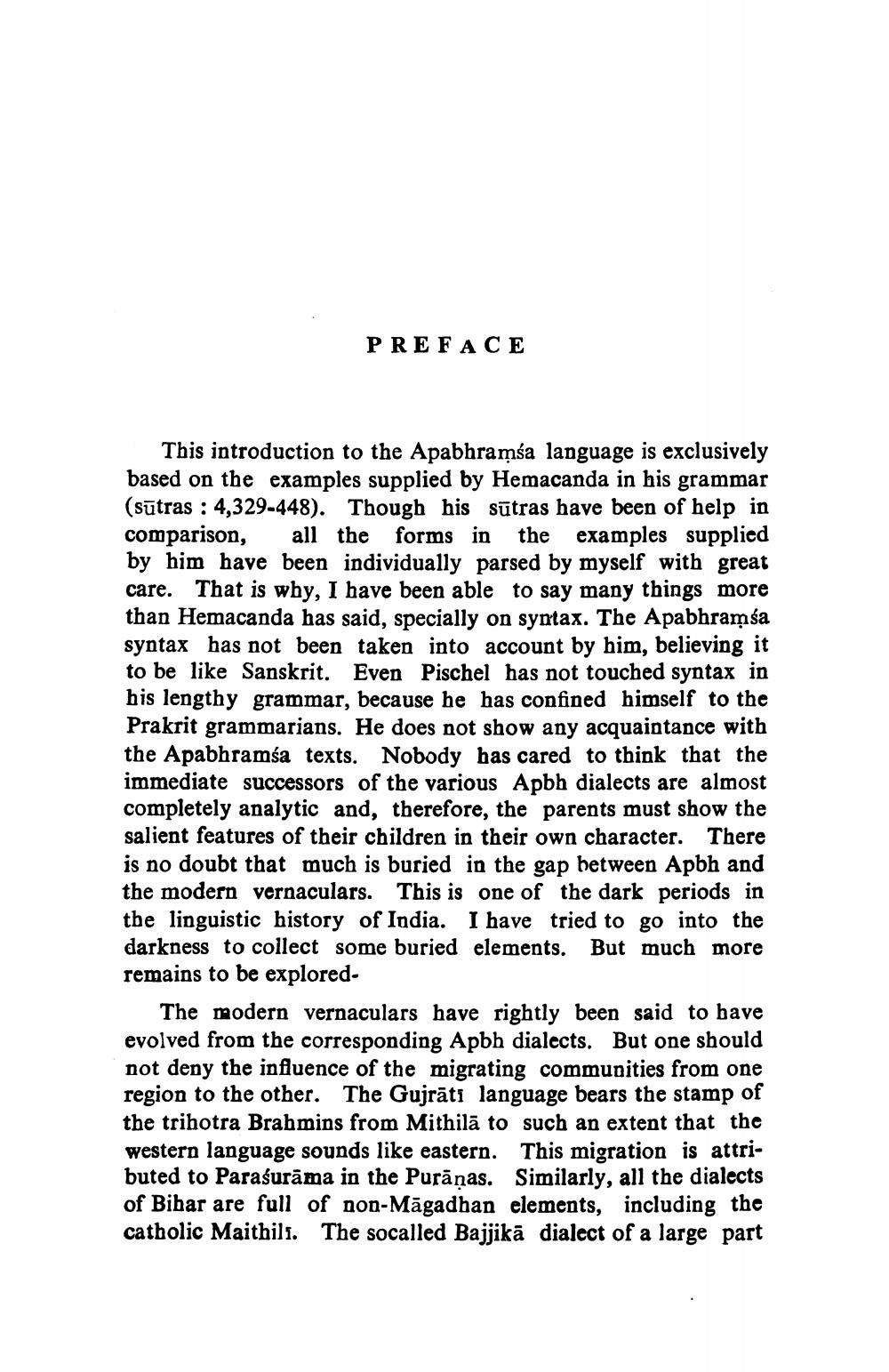Book Title: Grammar Of Apabhramsa Author(s): Madhusudan Mishra Publisher: Vidyanidhi Prakashan View full book textPage 4
________________ PREFACE This introduction to the Apabhramsa language is exclusively based on the examples supplied by Hemacanda in his grammar (sūtras: 4,329-448). Though his sūtras have been of help in comparison, all the forms in the examples supplied by him have been individually parsed by myself with great care. That is why, I have been able to say many things more than Hemacanda has said, specially on syntax. The Apabhramsa syntax has not been taken into account by him, believing it to be like Sanskrit. Even Pischel has not touched syntax in his lengthy grammar, because he has confined himself to the Prakrit grammarians. He does not show any acquaintance with the Apabhramsa texts. Nobody has cared to think that the immediate successors of the various Apbh dialects are almost completely analytic and, therefore, the parents must show the salient features of their children in their own character. There is no doubt that much is buried in the gap between Apbh and the modern vernaculars. This is one of the dark periods in the linguistic history of India. I have tried to go into the darkness to collect some buried elements. But much more remains to be explored The modern vernaculars have rightly been said to have evolved from the corresponding Apbh dialects. But one should not deny the influence of the migrating communities from one region to the other. The Gujrati language bears the stamp of the trihotra Brahmins from Mithila to such an extent that the western language sounds like eastern. This migration is attributed to Parasurāma in the Purāṇas. Similarly, all the dialects of Bihar are full of non-Magadhan elements, including the catholic Maithili. The socalled Bajjika dialect of a large partPage Navigation
1 2 3 4 5 6 7 8 9 10 11 12 13 14 15 16 17 18 19 20 21 22 23 24 25 26 27 28 29 30 31 32 33 34 35 36 37 38 39 40 41 42 ... 80
